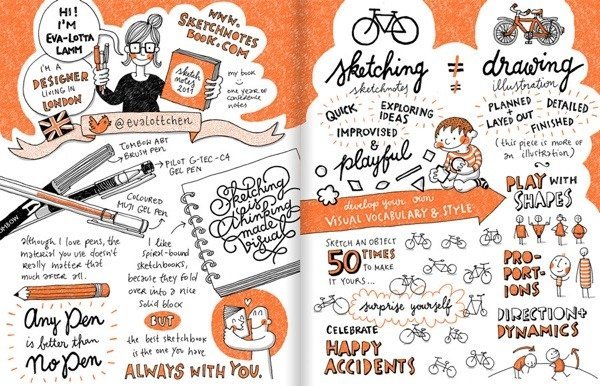The key take home is that it is excellent practice to literally budget thirty minutes of quality reading time. I easily read thousands of pages of material by rapidly skimming for key targets, but have rarely settled into a focused read which i actually enjoy. slow down already.
Way more important though is that you also establish an endpoint for the reading effort and this allows you to avoid exhaustion and distraction. Then take a break and away you go.
Add this to thirty minutes of mind stilling meditation along with a thirty minute walk that promotes contemplative meditation as well.
All this can super charge your day. Then sit down and do thirty minutes of writing. It surely can not hurt.
.
How to remember what you read: What to do before, during, and after reading anything
There
are few things guaranteed to improve your professional and personal
lives like reading more. Reading has been the ‘secret’ to so many
peoples’ success, from Bill Gates who reads 50 books a year to Elon Musk
who claims to have read 10+ hours a day when he was younger (including the entire Encyclopedia Britannica when he was just 9!)
Unfortunately,
whether you’re reading to expand your imagination or put yourself on
the path for promotion, finding more time to read in our already-hectic
schedules is difficult. Especially when so much content is coming at us
on a daily basis.
A decade-old study
found we’re exposed to 100,000 words a day. (And this was before we
started spending hours a day staring at our phones). So if we can’t
spend more time reading, how can we make sure we’re getting the most out of the time we do have?
How your brain turns reading into memory (and why it doesn’t all the time)
Reading more won’t do you any good if you don’t remember what you’ve read.
The
problem is, just like the hard drive in your computer, your brain has
limited storage space. And as such, it needs to make decisions on how
valuable a piece of information is.
So how does it make that decision? The easiest way to think about this is to talk about High School English class.
Most
people can remember the plot, characters, and maybe a few key scenes
from books they studied in English class. Yet forget entire books they
read only a few months ago. Why is that?
The simple fact is, you remember because you had
to. In class, you read for a purpose (getting a grade) and as such, you
knew you’d have to use the information and connect it to larger themes
or ideas (whether for a paper or quiz). But that book you picked up at
the airport last weekend? Sure, it helped kill a few hours on the plane,
but it wasn’t for anything.
And just like your High School
curriculum was designed to build off what you were learning, the more
you’re able to connect the information you get from reading, the more
knowledgable you’ll become. As Warren Buffett explains:
“That’s how knowledge works. It builds up, like compound interest. All of you can do it, but I guarantee not many of you will do it.”
This doesn’t mean you should only read things you’ll immediately use. But simply that if you want to remember what you read you need to be specific and intentional.
Before reading: Think about impression, association, and repetition

The
science of memory is pretty complicated and goes well beyond just
intent or purpose. You can have the best intentions when you pick up a
book but still forget everything once you turn the last page.
Instead, setting yourself up to remember what you read comes down to hitting three factors: Impression, association, and repetition.
Let’s look at each:
Impression: Choosing the right books
Our
brains love to lump experiences together to save energy (and space).
And so in order to remember what we read, it needs to stand out. Yet
most of us make two big mistakes.
- We read what everyone else is reading
- We force ourselves to get through books we’re not interested in (Hello, sunk cost fallacy!)
There are two obvious problems here..
First,
the publishing industry puts out 50,000+ books a year, plus the
millions of blog posts, articles, and studies out there. There’s simply
too much to read if you don’t curate your reading list.
Next,
forcing yourself to read books you’re not interested in just wastes
time. As studies have found, when you’re impressed by something, there’s a much higher probability that you’ll remember it and be able to use it later.
One
suggestion is to follow Joseph Campbell’s advice of “the fewer
citations, the better the book,” which helps you focus on primary
resources..
Or try Quartz at Work’s Khe Hy’s slightly less
scientific approach and look for books recommended by diverse groups of
people. Hy prioritizes reading any book that is suggested by three
friends from three different professional circles.
If all else
fails, go with your gut. Pick books and articles that you’re genuinely
interested in for personal reasons. If you find yourself falling asleep
or checking your phone every 2 minutes, it’s probably worth moving on.
Association: Connecting the book to “your why”
If interest in the book’s subject is the first part of how to remember what you read, the purpose is part two. Why are you reading this book/article/study right now?.
Of
course, it’s fine for your purpose to be general interest. But if
you’re looking to remember and use what you read, it’s better to know
how you’re going to use it.
In a study published in Memory & Cognition,
researchers gave two groups the same material to read. One group was
told they’d have a test at the end, while the others were told they
would have to teach someone the material they read.
In the end, both groups were given the same test. However, the “teaching” group ended up performing significantly better:
“When compared to learners expecting a test, learners expecting to teach recalled more material correctly, they organized their recall more effectively and they had better memory for especially important information.”
Having a clear purpose before you read can make all the difference in remembering and recalling information.
Repetition: Do a high-level skim (and don’t worry about the spoilers)
If
you hate spoilers, this section is going to hurt. Our brains love novel
experiences (impressions), but also pay special attention to anything
we repeatedly do. That’s why skimming and doing ‘pre-reading’ is a great
way to solidify what you’re reading in memory.
In his 1940 book, How to Read a Book, Mortimer Adler explains that the first stage of reading to remember is what he calls the “Structural stage”.
Instead
of just flipping to the first page, you should start with a general
understanding of what the book is about. At a minimum, Adler suggests
noting a few things:
- Is this book practical or theoretical?
- What field of study does it address?
- How is the book divided (not just the table of contents, but other divisions)?
- What problems is the author trying to solve?
Skim
the book and read titles and random quotes. Go through the citations or
index and see what sources it draws from. In other words, give yourself
a picture of the whole before diving in.
If you’re worried about missing nuance by skimming, listen to this advice from neuroscientist and author Sam Harris, who says
“most books are too long” and that we shouldn’t be afraid to read in
unconventional ways or turn to formats (lectures, blogs, etc…) with a
lower opportunity cost.
While reading: Commit to active reading, take better notes, and build connections

While
we all learned to read as children, we weren’t taught what’s called
‘active reading.’ Simply put, active reading is the process of reading
with determination to understand and evaluate how and if to use the
information you’re reading.
Compared to more ‘passive’ reading
where you just take the words in, actively engaging with a book is more
hands-on, deliberate, and, if we’re being honest, slower. But the payoff
is immense.
Here are some tips for how to make the most of your time actually reading:
Commit to regular reading sessions and block distractions
You need space and time to read actively. Yet, a study published in Time magazine found that Americans read, on average, just 19-minutes a day. And that number drops to 10-minutes or less for people under 34.
According to a University of Michigan Health study,
at a minimum, people should be reading for 30 minutes a day. Not only
does this help you get through books quickly, but consistent reading has
also been found to increase attention span, develop deeper connections,
and make us more empathetic.
To hit your daily reading goal, it
can help to block distractions like social media and entertainment sites
while you’re trying to read. RescueTime’s FocusTime feature can do just that.
Take better notes
Being
swept away by a story is fine, but when you’re reading to learn and
remember, you can’t let your mind become a river that sweeps you away.
One
of the best ways to do this is to become a ruthless notetaker. Your
librarian might kill you for this, but using a technique such as
marginalia (handwriting notes in the margin and marking up key patterns
for follow-ups) or sketchnotes (drawing notes and ideas) will make you a more active reader and help lock information in your memory.

There are plenty of different methods for taking better notes, but two things you’ll want to avoid are:
- Highlighting, re-reading, and typing: Studies show passive techniques like this are pretty much useless and can even make it harder to create connections in your memory.
- Spending more time note-taking and indexing than reading: Your notes are only good if you’re able to use them and re-engage with them. Skip the massive indexes and detailed notes and find a system that works for you.
Build mental connections while you read
Along
with note-taking, active reading involves creating associations between
what you’re currently reading and what you already know about the
subject matter or how it applies to your life.
As you read and
come across new ideas, try to associate them with familiar memories as a
means of creating a bond between old and new. This might mean pairing
new thoughts with familiar objects or using acronyms to connect ideas.
For
Farnam Street founder, Shane Parrish, the best way to create
associations is to use a “running tally” as you read. Here’s how his
process is explained in Quartz:
“As he’s reading, Parrish marks out thoughts, questions, and ‘most importantly connections to other ideas’ in the margins. (Note, he strongly prefers physical books.) Once he reaches the end of a chapter, ‘without looking back’ he writes down the main points and arguments, specifically noting topics that can be applied somewhere else.”
After reading: Apply, explain, and revisit

At
this point, you’ve done everything in your power to consume, digest,
and connect the ideas you’ve read. But our long-term memory doesn’t just
rely on this type of ‘learned knowledge’ but also on knowledge that is
‘experienced.’
When we connect memories or thoughts to different
experiences (reading the book, talking about it, meeting a friend who
has a different perspective) those moments are stored in our neocortex—a
part of the brain that is much easier for us to recall.
Once you’ve gotten through a book the work then becomes turning that information into experience. Here are a few tips:
Apply what you’ve read
Let’s
jump back into our High School English class example for a second. The
reason you remember what you read way back then isn’t just because you knew you’d have to use it. But also because you actually did.
You wrote tests and papers and had discussions on the topic. You
connected the ideas to bigger themes and new ideas. Yet how often do you
do that with what you’ve read these days?
One of the best ways to
remember what you read is to find opportunities to use it. Talk to a
friend about it, share thoughts online, write a synopsis and discuss it
with someone who doesn’t know the book. Any and all applications will
help you turn these ideas into memories.
Explain it to someone else
As
we wrote before, you’re more likely to remember what you’ve read if you
have to teach it. But even better is teaching it to a child.
According
to Nobel winning physicist Richard Feynman, one of the best ways to
really learn anything is to explain it in the most basic terms possible.
Short sentences. No jargon. Common language only.
These limitations
force you to understand the core of the topic and not mask
misunderstanding under frilly language.
Revisit and organize your notes
While
you explain and apply what you’ve read, you’ll more than likely find
spots where you’ve forgotten or aren’t completely sure about the ideas.
This is where it’s time to use all those great notes you wrote.
Go
back through the source material and your notes and see what sticks out
to you. Make sure you’re translating jargon into simple sentences. And
then organize your own notes into a simple story that flows. A great way
to think about this is as an elevator pitch. If you had just 30 seconds
to explain the most thing you learned from this book, what would you say?
Reading to remember is more work, but the results are worth it
With
all the urgent tasks that surround us every single day, it’s easy to
forget the joy and benefits of reading. And while actively reading might
make it a less relaxing activity, these techniques have compounding
returns.
This isn’t to say you shouldn’t grab a paperback and fall
into someone else’s world once in a while. But simply that if you’re
reading to remember and grow either personally or professionally, you
need to be more deliberate.
The more you read, remember, and
connect ideas, the more your knowledge base grows. And not only will you
become more confident, but also more creative.

No comments:
Post a Comment